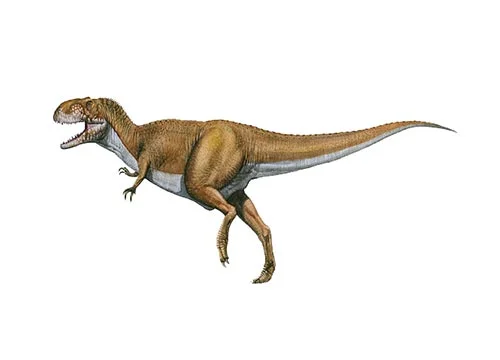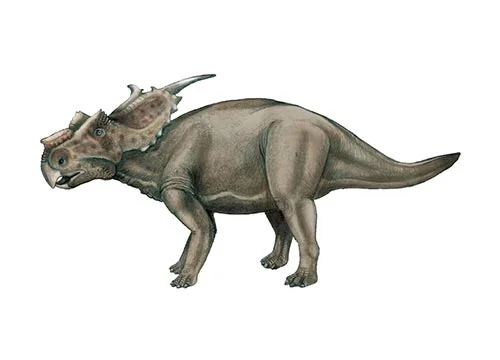Nomingia (named after the region it was discovered in)

No-min-ge-ah
R. Barsbold, H. Osmólska, M. Watabe, P. J. Currie & K. Tsogtbaatar - 2000
Omnivore
Estimated 1.5 meters long
Small Theropod
N. gobiensis (type)
Mongolia - Nemegt Formation
Late Cretaceous, 70 million years ago
Nomingia Facts
Nomingia was a small, herbivorous dinosaur that lived during the Late Cretaceous period, approximately 70 million years ago. Its fossils were first discovered in the Gobi Desert of Mongolia, from which it derives its name.
Nomingia is known from a single, nearly complete skeleton that was found in the Nemegt Formation of Mongolia. The dinosaur was about 1.5 meters (5 feet) long and weighed about 10 kilograms (22 pounds). Its body was slender and agile, with long, thin legs and a long, stiff tail that likely helped it balance and maneuver.
One of the most distinctive features of Nomingia was its skull, which had a unique combination of features that made it difficult to classify. It had a beak-like mouth and leaf-shaped teeth, which suggest that it was an herbivore that fed on tough vegetation. Its skull also had a bony crest that ran along the top of its head, similar to the crests seen in some modern birds.
Based on its skeletal features, Nomingia has been classified as a member of the oviraptorosaur family, a group of bird-like dinosaurs that were characterized by their toothless beaks and bird-like skulls. However, its unique combination of features has made it difficult to determine exactly where it fits within this group.
In conclusion, Nomingia is an interesting and unique dinosaur that lived during the Late Cretaceous period in what is now Mongolia. Its slender body, long legs, and bird-like skull are characteristic of the oviraptorosaurs, a group of theropod dinosaurs that were closely related to birds. The study of dinosaurs like Nomingia helps us to better understand the diversity of life that existed on Earth millions of years ago, and the important role that paleontology plays in uncovering and understanding this history.



